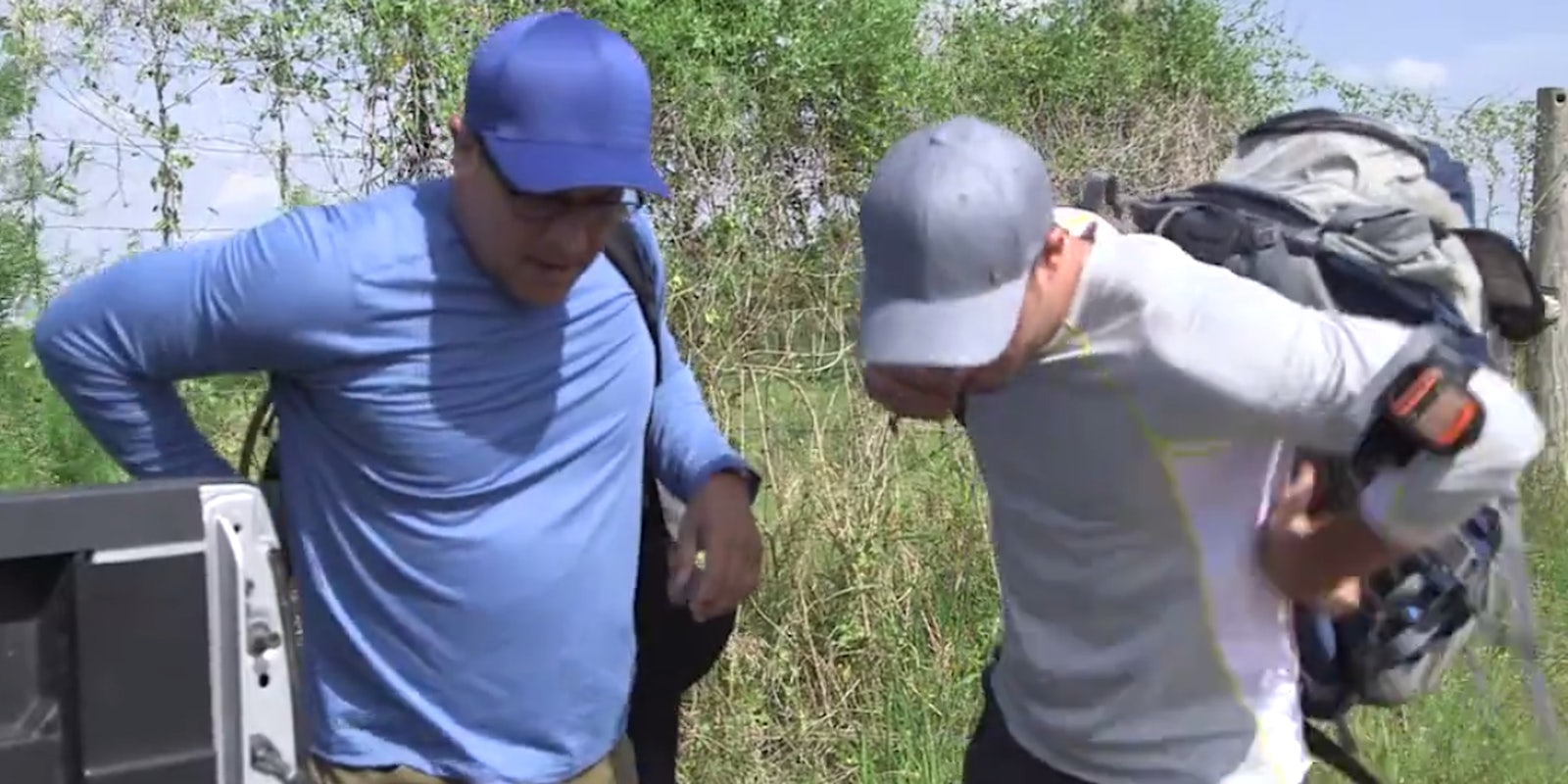The Weather Channel has been moving far beyond its roots, into the digital documentary business. The Real Death Valley is an example of how the channel is showing the effects of climate on the human condition.
The documentary, which debuts Aug. 11, is the latest in a series of digital films that “peel back the curtain on the raw forces of nature.” This 22-minute installment, reported by John Carlos Frey, is a thought-provoking, often gut-wrenching firsthand POV narrative that traces the journey migrant Central Americans take from the U.S. border around various checkpoints. The hot, humid conditions in Brooks County, Texas—the treacherous gateway between the border and the checkpoint at Falfurrias, Texas—have claimed the lives of scores of those in search of a better life in the U.S.
Frey, a veteran investigative reporter on this joint project—co-produced by the Weather Channel and Telemundo in collaboration with the nonprofit Investigative Fund—is not new to issues related to immigrants and the U.S. border. His work has been featured on a 60 Minutes episode, “The All-American Canal,” and the 2009 film The 800 Mile Wall.
Even with years of reporting on the politically, emotionally charged issues of the border, each project has its own central theme. Approached by Efran Films for this project, Frey knew there was only one way he could accurately capture the harrowing journey of those who travel the 50 miles to potential freedom by foot. (Note: The Real Death Valley contains disturbing images and many not be suitable for all audiences.)
“The only way I could tell the story was to take the walk myself,” Frey told the Daily Dot. He explains how the very agency tracking down illegal immigrants often became the search and rescue team that comes to their aid when those in desperation call 911, or use an emergency beacon placed along the trail in Brooks County.
The real-life drama unfolds via the account of Sigfredo, who left El Salvador with his younger brother, a street artist with a strong following in his home country. When the brother refused to design tattoos for a powerful gang, he and members of his family were marked for death. The journey took them through Mexico and a border crossing of the Rio Grande on a raft with all their worldly goods. As Frey points out, the most difficult part of the path to freedom begins when migrants enter the U.S. and have to circumnavigate checkpoints, which are within about 50 miles of the border. It is during that trek that the elements unleash havoc, resulting in death by dehydration, starvation, and snake bites.
In just 22 minutes, there is a lot to absorb. In addition to Sigfredo’s saga, we are taken behind the scenes and offered candid interviews with representatives from the undermanned U.S. Border Patrol, as well as a horrific glimpse at the work being done by a forensic team from Baylor University, who are digging through mass graves where unidentified migrants were dumped. The goal is to transport the remains to a lab for identification, in the hopes of returning what is left of the bodies back to their native land for a proper burial.
The film is perhaps intentionally light on the political battle being waged by those wanting to seal the border. Understandably, too much focus on arguments for and against tougher immigration laws would deflate some of the impact of the tragedy depicted in The Real Death Valley, but a basic primer on the issues might add to the overall perspective.
As with other short documentary films geared for TV viewing in the past, the message includes factual pieces that give the audience room to interpret as they see fit, draw their own conclusions, and start their own conversations. Frey reveals that in crafting the message, it was “difficult not to walk through this maze and not be affected. I was seeing humanity at its worst.”
Frey is honest that his approach is not geared to ask for sympathy, but to “lay out the truth and let the pieces fall where they may.”
Screengrab via the Weather Channel


